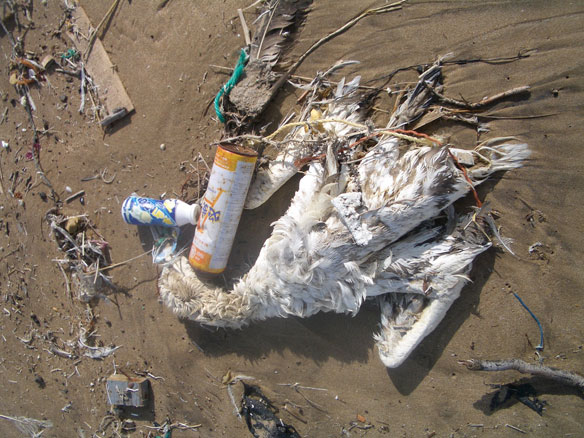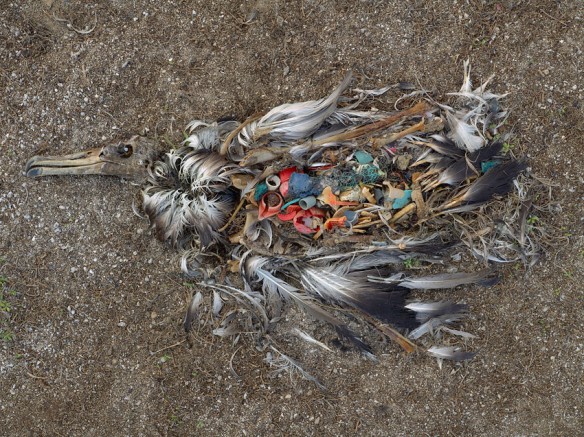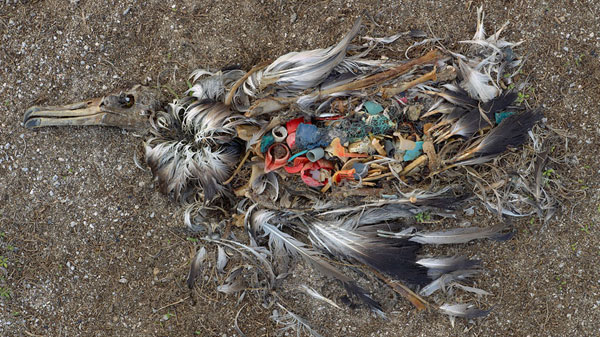
“When plastic ingestion occurs, it blocks the digestive tract, gets lodged in animals windpipes cutting airflow causing suffocation, or fills the stomach, resulting in malnutrition, starvation and potentially death. Indeed, it is found that debris often accumulates in the animals’ gut and give a false sense of fullness, causing the animal to stop eating and slowly starve to death.” —Captions and Photograph: © SAF — Coastal Care
Excerpts;
By 2050, nearly all seabirds will have plastic in their stomachs. Already, 9 out of 10 of the birds have some of the substance in their digestive tracts. Such are the sobering conclusions of a study published August 31 in the journal Proceedings of the National Academy of Sciences…
Original Study: “Threat of plastic pollution to seabirds is global, pervasive, and increasing,” Pnas
Toxins From Plastic Pollution Impacting Health Of Seabirds, ABC News Australia (09-25-2014)
The Plastic Found In a Single Turtle’s Stomach, Independent UK (Uploaded 03-24-2011)
Global Impact of Debris on Marine Life Studied, (02-19-2015)
Nearly 700 species of marine animal have been recorded as having encountered humanmade debris such as plastic and glass according to the most comprehensive impact study in more than a decade…
Death by Plastic: Is Ocean Plastic Garbage Killing Whales?, Independent UK
From the coasts of California to Adriatic, Tasmania or Normandy, millions of tonnes of plastic debris dumped each year in the world’s oceans, could pose a lethal threat to whales, according to a scientific assessment to be presented at the International Whaling Commission this week. Ingestion of plastic refuse is emerging as a serious cause of disability and death for the large ocean-dwelling mammals…
Midway Journey II, An Environmental Tragedy Depicted
Five media artists, led by photographer Chris Jordan, traveled to Midway Atoll to witness the catastrophic effect of our disposable culture on some of the world’s most beautiful and symbolic creatures. But even more, they embarked on an introspective journey to confront a vitally relevant question: In this time of unprecedented global crisis, how can we move through grief, denial, despair and immobility into new territories of acceptance, possibility, and wise action?
Plastic Pollution / When The Mermaids Cry: The Great Plastic Tide, Coastal Care
“The unprecedented plastic waste tide plaguing our oceans and shores, can become as limited as our chosen relationship with plastics, which involves a dramatic behavioral change on our part…”

“© Midway: Message from the Gyre (2009),” from the Midway Series. Photograph courtesy of © Chris Jordan for Coastal Care’s Photo Of The Month, August 2010.









